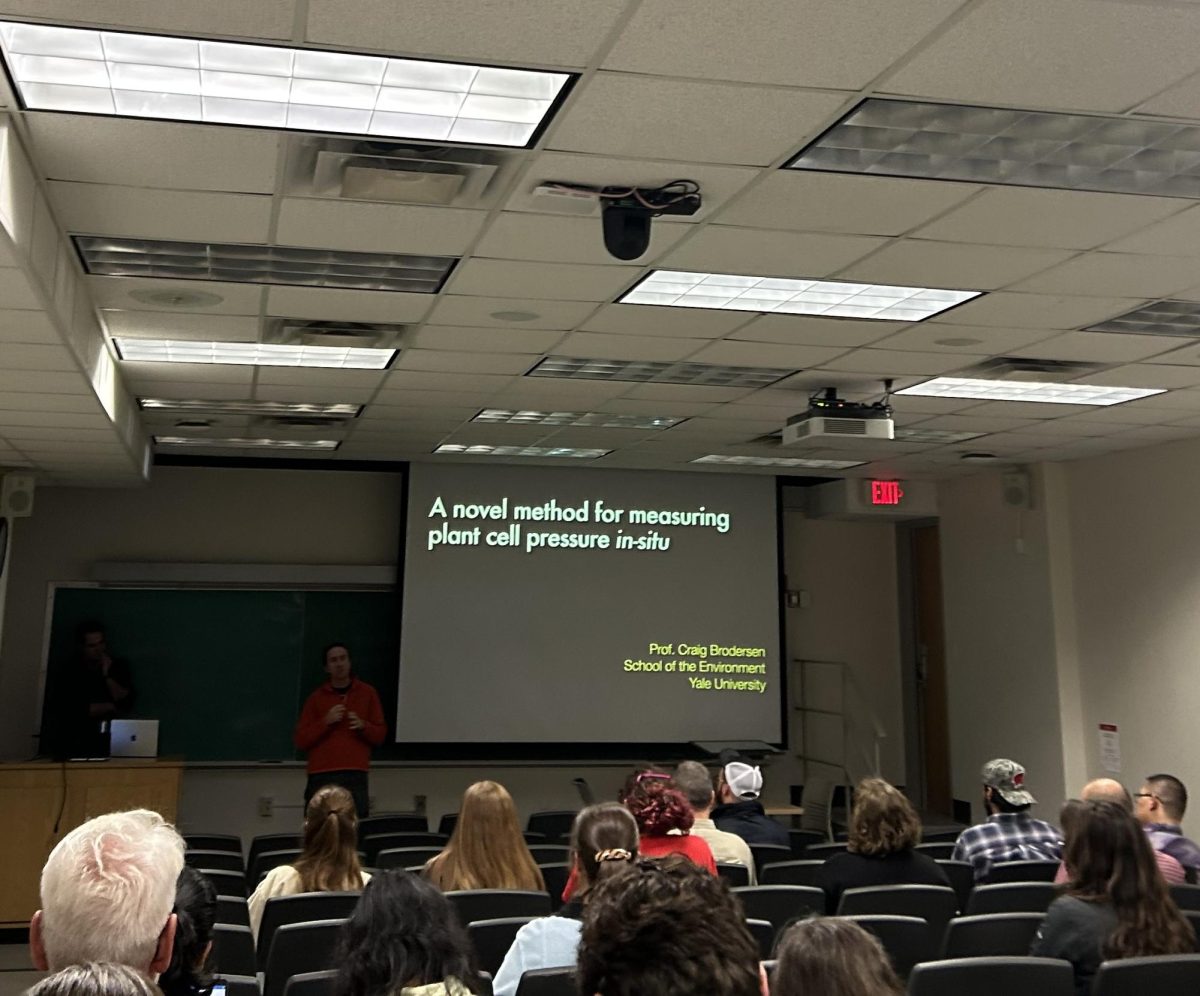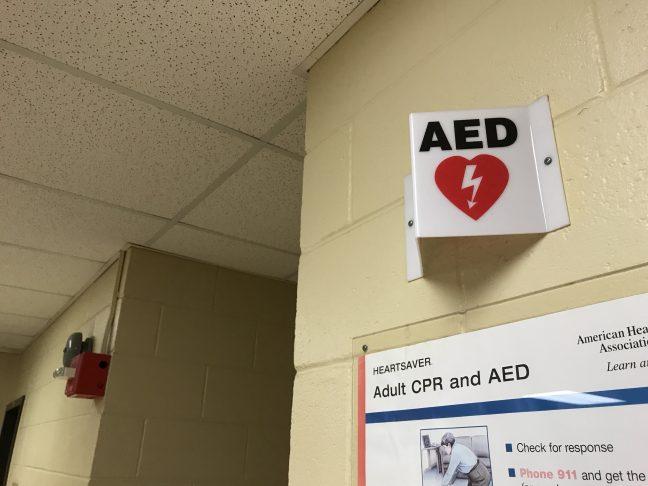It started with a hunch.
Larry Kinsman, founder and owner of the environmental remediation company Orin Technologies, suspected that a particular microbial treatment might see success when applied towards degrading PFAS — the carcinogenic pollutant that threatens water systems across Wisconsin and the Great Lakes region.
PFAS, which stands for polyfluoroalkyl substances, comprise a stubborn class of chemicals. The compounds, which are full of carbon fluorine bonds — the strongest known to organic chemistry — are notoriously difficult to break down and remove from the environment.
Once PFAS ends up in the environment, some pose a threat to human health. Significant exposure is associated with decreased fertility, some cancers, developmental delays, hormonal interference and even reduced immune responses to vaccines.
After much tinkering and in-house experimentation, Orin, based in Verona, claims to have discovered a method of cleaning up toxic PFAS sites — by getting microbes to break down the chemicals. This past December, in a partnership with the Canadian bioremediation company Fixed Earth Innovations, Orin began a yearlong pilot study to test whether their method can actually reduce levels of PFAS at the heavily contaminated Air National Guard base, which lies on the property of Dane County Airport.
The Reproducibility Crisis: What happens when scientists can’t recreate established findings?
PFAS contamination at the airfield is due to the chemical’s presence in a firefighting foam that specifically targets petroleum fires. Since the 1970s, the Air Force has relied on these foams to put out fires during crashes and training exercises. The Air Force has now phased out and replaced the foam in the last decade due to mounting evidence of PFAS toxicity.
Contamination at Madison’s National Guard base is extensive. The still evolving EPA threshold for PFOS and PFOA — the two most prevalent and studied PFAS chemicals — is set to 70 parts per trillion, individually or combined. Some states go farther, with New Jersey declaring levels unsafe above just 13 ppt. By contrast, groundwater samples taken at the airfield for just PFOS stand at 48,000 ppt.
The contamination site is isolated within the air base, just outside its fire department, but no one is entirely sure how far the plume extends underground. The goal of the pilot study is to also measure the extent of the contamination, Dane County Airport spokesperson Michael Riechers said.
“In all likelihood, it goes well beyond the confines of the base proper onto airport property, and we’re committed to following the plume wherever it goes at this point,” Riechers said.
Orin’s strategy involves mixing Bioavailable Absorbent Media, called BAM, with contaminated soil, Kinsman said. In addition to providing microbes a surface to colonize, the media’s porosity allows for contaminants to be drawn into it, according to Orin.
The Lab Report: Studying the impacts of climate system changes on volcanoes
The bioremediation strategy also uses electrodes to create an oxygen supply. The microbes utilize aerobic processes, which means involving oxygen, as opposed to anaerobic processes to carry out the breakdown.
“Everyone makes the general assumption you’re going anaerobically,” Kinsman said. “But when you go anaerobically, it’s taking more energy. Going [aerobically] — it’s a more rapid reduction.”
In their lab, Orin was able to reduce PFAS concentrations as high as 3 million ppt by 99% over a 15 to 26 week treatment, Kinsman said. During the process, he said they observed smaller and smaller fluorocarbon chain lengths appear, indicating that the PFAS were actually being degraded into smaller components.
If Orin’s strategy proves replicable, it will be a major breakthrough. Christy Remucal, a University of Wisconsin professor of civil and environmental engineering who specializes in environmental PFAS, said PFOS and PFOA have no known natural degradation processes in the environment.
“I’m sure there are microbes out there that can do it, but it really hasn’t been demonstrated, certainly not under field conditions,” Remucal said. “I would like to see the company’s data and really see it peer reviewed to be convinced of it.”
Last year, Wisconsin’s Department of Natural Resources declared a similar PFAS removal effort by Orin to be ineffective. After news of the DNR’s assessment broke, Riechers provided a statement to the Wisconsin State Journal noting while comprehensive results were not available yet, preliminary results were promising. He also said the treatment continues to be reengineered and refined.
Kinsman founded Orin two decades ago. At the time, he was working for a consulting firm, working with a variety of innovative technologies, when he decided that he wanted to “get past the bureaucracy” and conduct his own research projects. When a friend offered him funding to found Orin, Kinsman hopped on board and eventually bought out his friend. The company’s name, Orin, stands for organic and inorganic chemistry — a nod to the types of reactions their solutions utilize.
The Lab Report: Alternate solutions for natural products using plant tissue
These days, Orin focuses on cleanup in settings ranging from corner gas stations to Superfund sites, Kinsman said, noting that the company has strategies for addressing a range of contaminants, including aromatic hydrocarbons, which are found in crude oil derived contamination and heavy metals.
Current strategies for addressing PFAS contamination work by transferring the contamination rather than degrading it, Remucal said. One method works “like a really fancy Brita filter” by passing water through something called activated carbon, he explained.
First used in the 18th century to filter “odors” from water, activated carbon is a miraculous substance. Produced from high carbon materials such as wood, coconut shells and coal, it has a tremendously high surface area at the microscopic level — up to 2,000 square meters per gram. When water passes through it, contaminants adsorb onto the abundant microsurface of activated carbon.
Other strategies for removing PFAS from water include reverse osmosis and foam fractionation, Remucal said. Reverse osmosis is well established and involves forcing water through a membrane, trapping PFAS on one side.
Foam fractionation is a newer, still developing technique that takes advantage of PFAS chemical’s tendency to localize to air bubbles. Bubbling air through contaminated water and collecting foam that forms at the top has been shown to clean the water somewhat. Still, the techniques all carry the same flaw.
“These aren’t perfect, because they’re not really destroying the chemical, but they do achieve the goal of removing the PFAS from water,” Remucal said.














